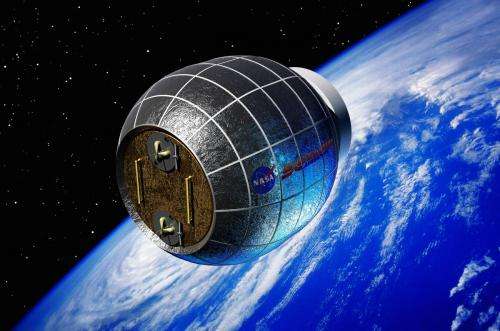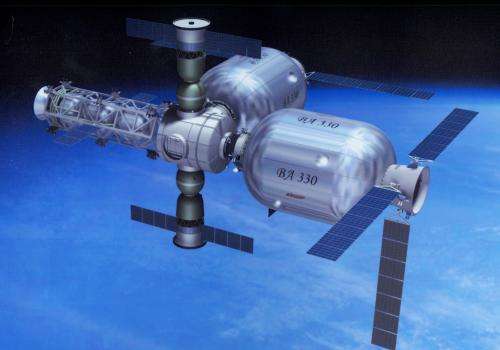Bigelow Inflatable Module to be added to space station in 2015

Astronauts aboard the International Space Station are going to be getting an addition in the near future, and in the form of an inflatable room no less. The Bigelow Expandable Activity Module (BEAM) is the first privately-built space habitat that will added to the ISS, and it will be transported into orbit aboard a Space X Falcon 9 rocket sometime next year.
"The BEAM is one small step for Bigelow Aerospace," Bigelow representative Michael Gold told Universe Today, "but is also one giant leap for private sector space activities since the BEAM will be the first privately owned and developed module ever to be part of a crewed system in space."
NASA and Bigelow Aerospace announced the $17.8 million contract in 2013, and on October 2, 2014, Gold announced at the International Astronautical Congress that the launch would take place next year on a SpaceX resupply flight. Gold said BEAM provides an example of what the company, and private firms in general, can do in low-Earth orbit (LEO).
Upon arrival, the BEAM will be installed by the robotic Canadarm2 onto the Tranquility node's aft docking port. Once it's expanded, an ISS crew member will enter the module and become the first astronaut to step inside an expandable habitat system. The plan is to have the module remain in place for a few years to test and demonstrate the feasibility of the company's inflatable space habitat technology.

The BEAM, which weighs approximately 1,360 kg (3000 lbs), will travel aboard the unpressurized cargo hold of a Dragon capsule. Once it is successfully transferred to the station, ISS astronauts will activate the deployment sequence, and the module will expand out to its full size – approx. 4 meters (13 feet) in length and 3 meters (10.5 feet) in diameter.
Bigelow currently has two stand-alone autonomous spacecraft in orbit, the Genesis I and the Genesis II – both of which are collecting data about LEO conditions and how well the technology performs in practice in space. In turn, NASA will use BEAM to measure the radiation levels inside the module as compared to other areas of the ISS to determine how safe it is for habitation.
"Through the flight of the Bigelow module on the International Space Station, we expect to learn critical technical performance data related to non-metallic structures in space," said Jason Crusan, director of Advanced Exploration Systems Division at NASA Human Exploration and Operations Mission Directorate, in an email to Universe Today. "Data about things such as radiation, thermal, and overall operations of non-metallic structures in space has multiple benefits both to NASA and to the commercial sector."
The BEAM module will also allow for further data collection for the company, which is planning on launching its own space station, named Bigelow Aerospace Alpha Station, to be at least partially operational as early as next year. This station will be initially made up of two BA 330 expandable habitats, which are designed to function either as an independent space station or as modular components that can be connected to create a larger apparatus.
Bigelow hopes that such stations will allow for greater participation in space exploration and research, both by nations and private companies. But looking to the future, Bigelow also sees BEAM and its other long-term projects for space habitation as a crucial step in the commercialization of Low-Earth Orbit.
Already, the company is planing on getaways that will take tourists into orbit – for a modest price, of course. Beginning in 2012, the company began offering space travel packages, including the trip to and from LEO aboard a SpaceX craft, starting at $26.25 million and a two-month stay package aboard the Alpha Station for $25 million – bringing the grand total to just $51.25 million, compared to the $40 million it currently costs members of the public to stay on the ISS for a week.
Provided by Universe Today





















